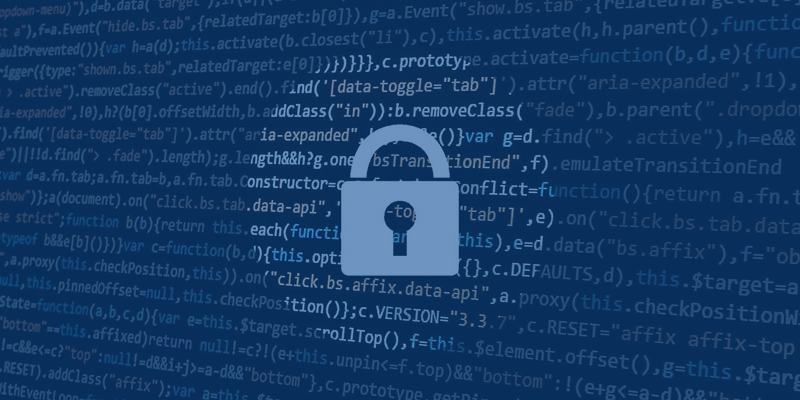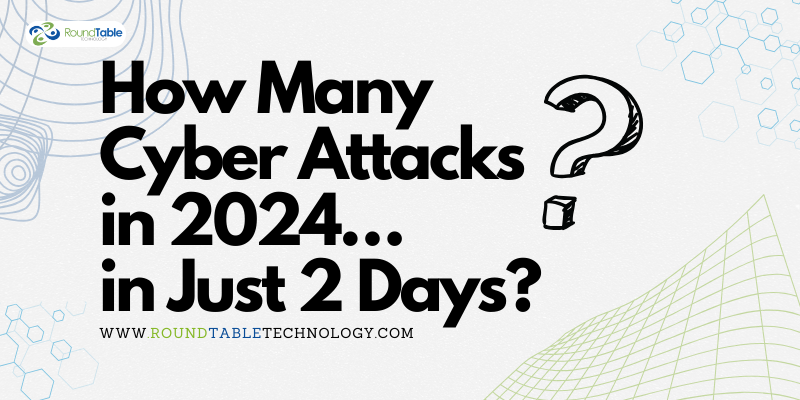3 Ways Your Organization May Be At Risk of CyberAttack
Your staff is instrumental when it comes to protecting your organization from cyber threats. But they can also become targets for hackers and...
5 min read
.jpg) Justin Brown
:
Aug 16, 2024 10:57:49 AM
Justin Brown
:
Aug 16, 2024 10:57:49 AM

Cyber attacks are an ever-present threat in today’s digital landscape, affecting organizations of all sizes and across all sectors. However, nonprofits are increasingly finding themselves in the crosshairs of cybercriminals. While many might assume that nonprofits, with their altruistic missions and often limited financial resources, would not be of much interest to hackers, the opposite is true. Nonprofits are frequently targeted by cyber attacks for a variety of reasons, stemming from a combination of vulnerabilities and the unique nature of the data they manage. Understanding these factors is crucial for nonprofits to bolster their defenses and protect their operations from potentially devastating breaches.
One of the most significant reasons nonprofits are attractive targets for cybercriminals is their typically limited budgets for cybersecurity. Unlike large corporations that can allocate substantial resources toward building robust cybersecurity infrastructures, nonprofits often operate on tight budgets. This financial constraint means that many nonprofits struggle to invest in the advanced security tools and technologies necessary to protect their digital assets effectively.
Furthermore, with limited funds, nonprofits may prioritize their spending on mission-critical activities, such as service delivery and community engagement, rather than on cybersecurity. While this focus on core activities is understandable, it leaves many nonprofits with outdated or inadequate security measures, making them vulnerable to cyber attacks. Hackers are well aware of this and often view nonprofits as low-hanging fruit—organizations that can be breached with relatively little effort but with potentially high rewards.
Despite their potential financial limitations, nonprofits often handle a wealth of valuable and sensitive data. This includes donor information, such as names, addresses, and credit card details, as well as personal information of beneficiaries, employees, and volunteers. Nonprofits may also store sensitive financial records, grant proposals, and intellectual property related to their programs and services.
Cybercriminals target this data for several reasons. First, donor information can be sold on the dark web or used to commit identity theft and financial fraud. Second, personal information about beneficiaries, especially in cases where nonprofits serve vulnerable populations, can be exploited for extortion or other malicious purposes. Additionally, hackers may view intellectual property and proprietary data as valuable targets for corporate espionage or to disrupt the nonprofit’s operations.
The aggregation of such sensitive information makes nonprofits particularly attractive to cybercriminals. A single breach can yield a trove of data that can be monetized or weaponized, making nonprofits a prime target despite their limited financial resources.
Another critical vulnerability for many nonprofits is the lack of cybersecurity awareness and training among staff and volunteers. Nonprofits often rely heavily on volunteers, many of whom may not have received adequate training in cybersecurity best practices. Additionally, employees within nonprofits may not possess the same level of cybersecurity awareness as those in more tech-focused industries.
This knowledge gap can lead to risky behaviors, such as clicking on phishing emails, using weak passwords, or failing to update software regularly. Cybercriminals are well aware of these human vulnerabilities and often exploit them through social engineering attacks designed to trick individuals into revealing sensitive information or granting access to the organization’s systems.
The absence of a comprehensive cybersecurity training program can leave nonprofits particularly susceptible to attacks. Without proper training, even the most well-intentioned staff members can inadvertently open the door to cybercriminals, causing significant harm to the organization.
Nonprofits frequently rely on third-party vendors and software to support their operations, whether it’s for donor management, communication, or financial processing. While these tools are essential for efficiency and scalability, they also introduce additional cybersecurity risks. If a third-party vendor’s systems are compromised, it can have a direct impact on the nonprofit, potentially exposing sensitive data or disrupting critical services.
For example, many nonprofits use cloud-based platforms to manage their data and operations. While these platforms offer flexibility and cost savings, they also require stringent security measures to protect against breaches. Unfortunately, not all vendors maintain the same level of cybersecurity rigor, and a breach at the vendor level can have serious consequences for the nonprofit.
Moreover, nonprofits may lack the resources to thoroughly vet the security practices of their third-party vendors, leaving them reliant on assurances that may not be fully trustworthy. This reliance on third-party vendors and software, combined with limited cybersecurity budgets, creates a perfect storm of vulnerabilities that cybercriminals can exploit.
For example, RoundTable Technology maintains a SOC 2 Type 2 attestation year-round, in order to showcase our commitment to an extremely high level of cybersecurity controls to protect ourselves and our member organizations.
Cybercriminals often view nonprofits as low-risk, high-reward targets. The perception is that nonprofits, due to their limited budgets and lack of sophisticated cybersecurity measures, are easier to breach than large corporations or government agencies. Additionally, the data they hold—whether it’s donor information, beneficiary details, or proprietary research—can be highly valuable on the black market.
This perception of nonprofits as soft targets is compounded by the fact that many nonprofits may not have the resources or expertise to quickly detect and respond to a breach. As a result, cybercriminals may believe they can infiltrate a nonprofit’s systems, extract valuable data, and remain undetected for longer periods than they would in a more security-conscious organization.
The rapid digitization of nonprofit operations, accelerated by the COVID-19 pandemic, has further increased the sector’s vulnerability to cyber attacks. As nonprofits have moved more of their activities online—ranging from fundraising to service delivery—they have expanded their digital footprint and, consequently, their exposure to cyber threats.
For instance, online donation platforms, virtual events, and digital communication tools have become essential components of nonprofit operations. However, these platforms also present new attack surfaces for cybercriminals to exploit. Without adequate cybersecurity measures, the very technologies that enable nonprofits to reach and serve more people can become conduits for cyber attacks.
The shift to digital operations, while necessary and beneficial, requires a corresponding investment in cybersecurity to protect against the heightened risks associated with online activities.
Finally, nonprofits face significant legal and reputational risks if they fall victim to a cyber attack. Data protection regulations, such as the General Data Protection Regulation (GDPR) in Europe and the California Consumer Privacy Act (CCPA) in the United States, impose stringent requirements on organizations to safeguard personal data. Nonprofits that fail to comply with these regulations can face hefty fines and legal action in the event of a data breach.
Moreover, the reputational damage from a cyber attack can be particularly devastating for nonprofits. Trust is a cornerstone of nonprofit organizations, and a breach that compromises donor or beneficiary information can severely undermine that trust. This loss of trust can lead to reduced donations, diminished community support, and long-term harm to the nonprofit’s mission and impact.
And while the fact that an organization may or may not be compliant with certain legislation may not be a leading factor of being targeted for a cyber attack, it’s definitely something to consider when looking into whether or not your nonprofit should invest in higher level security controls.
Nonprofits are increasingly attractive targets for cybercriminals due to a combination of limited cybersecurity budgets, valuable data, lack of awareness, reliance on third-party vendors, and the perception of being low-risk, high-reward targets. As nonprofits continue to embrace digital technologies, the need for robust cybersecurity measures becomes more critical than ever. By understanding the unique vulnerabilities they face, nonprofits can take proactive steps to protect their data, operations, and reputations from the growing threat of cyber attacks.
To safeguard your nonprofit organization, consider conducting a cybersecurity audit, investing in staff training, and exploring cybersecurity insurance options. Stay informed about the latest threats and best practices by subscribing to our blog for more cybersecurity tips and updates. Together, we can build a stronger, more secure nonprofit sector.

Your staff is instrumental when it comes to protecting your organization from cyber threats. But they can also become targets for hackers and...

As soon as a new employee starts at an organization, they become a target for cybercriminals.

In recent times, the nonprofit sector, alongside others, has been increasingly targeted by cybercriminals. The intent of this article is to shed...